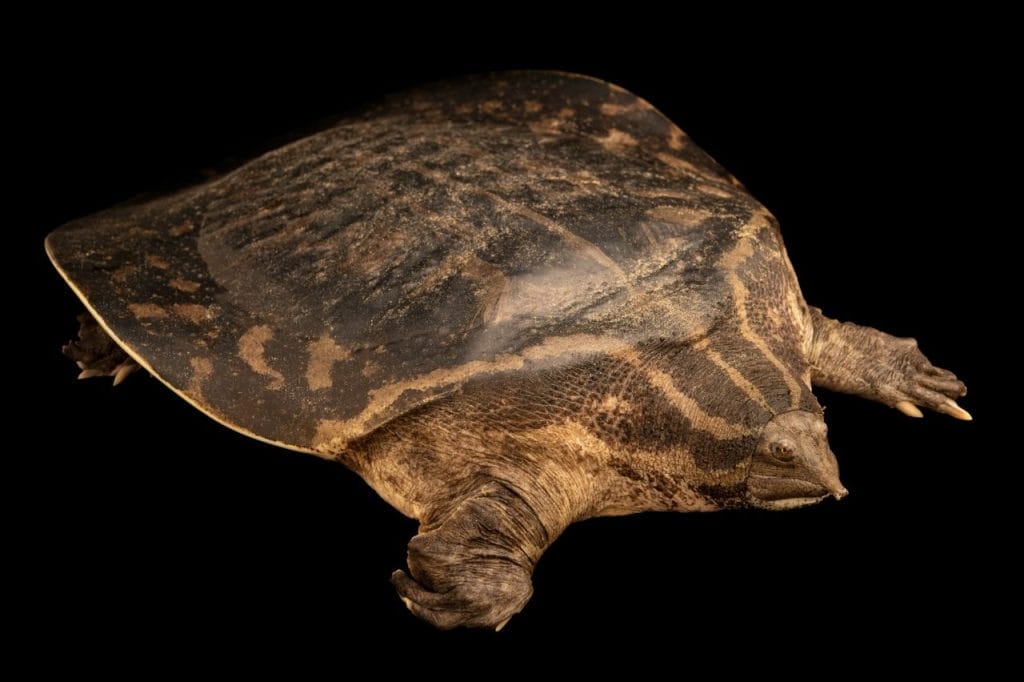Pelochelys bibroni (Bibron’s Giant soft-shelled Turtle)
Home > Turtle Database > Pelochelys bibroni (Bibron’s Giant soft-shelled Turtle)

Pelochelys bibroni, known as Bibron’s Giant Softshell Turtle, is one of the largest freshwater turtles on Earth. It’s elusive and rarely seen, making it one of the most mysterious turtle species in the wild.
Native Turtle Species Map – Find Turtles by Region
Scientific Classification
Kingdom: Animalia
Phylum: Chordata
Class: Reptilia
Order: Testudines
Family: Trionychidae
Genus: Pelochelys
Species: Pelochelys bibroni
Common Names
Bibron’s Giant Soft-shelled Turtle
Southern New Guinea giant softshell turtle
This Hilarious Turtle Book Might Know Your Pet Better Than You Do
Let’s be real—most turtle care guides feel like reading a textbook written by a sleep-deprived zookeeper.
This one’s not that.
Told from the snarky point of view of a grumpy, judgmental turtle, 21 Turtle Truths You’ll Never Read in a Care Guide is packed with sarcasm, sass, and surprisingly useful insights.
And hey—you don’t have to commit to the whole thing just yet.
Grab 2 free truths from the ebook and get a taste of what your turtle really thinks about your setup, your food choices, and that weird plastic palm tree.
It’s funny, it’s honest, and if you’ve ever owned a turtle who glares at you like you’re the problem—you’ll feel seen.
Identification
Description
This turtle has a broad, flat, leathery shell and a long neck with a snorkel-like nose. Adult sizes can exceed 30 inches in shell length and weigh over 50 kilograms. The coloration is usually dark olive to brown.
Sexual Dimorphism
Males are generally smaller and have longer, thicker tails. Females are larger and more rounded in shape.
Check more turtles from the Pelochelys genus
Native Origin and Distribution
Geographical Range
Pelochelys bibroni is found in Papua New Guinea and southern parts of New Guinea, possibly extending into nearby Indonesian territories.
Preferred Habitat
They live in large rivers, lowland freshwater streams, and estuaries. The species prefers slow-moving or still waters with muddy or sandy bottoms.
Behavior
Feeding Habits
They are carnivorous and feed on fish, crustaceans, and other aquatic animals. They may also scavenge.
Predators
Eggs and hatchlings are vulnerable to birds, monitor lizards, and crocodiles. Adults have few natural predators but are at risk from humans.
Reproduction
Breeding Season
Believed to occur during the dry season, but exact timing is unclear due to lack of data.
Reproductive Method
Oviparous. Females lay clutches of eggs in sandy riverbanks. Specific clutch size and incubation period are poorly documented.
Conservation
Extinction Status
Classified as Vulnerable by the IUCN.
Threats
Major threats include habitat loss, river pollution, egg harvesting, and accidental capture in fishing gear. Human development and hunting add extra pressure.
Conservation Measures
Little formal protection exists. Conservation efforts are limited and mainly focus on habitat monitoring. Awareness campaigns and more research are needed.
Economic Importance
Locally hunted for meat and eggs. Some illegal trade also exists due to its rarity and size, though it’s not common in the pet trade.
Interesting Facts
Pelochelys bibroni is one of the least studied large turtles in the world. Its size and odd appearance often spark myths and stories among local communities. Some sightings have been confused with giant sea turtles due to their bulk.

About Author
Muntaseer Rahman started keeping pet turtles back in 2013. He also owns the largest Turtle & Tortoise Facebook community in Bangladesh. These days he is mostly active on Facebook.













